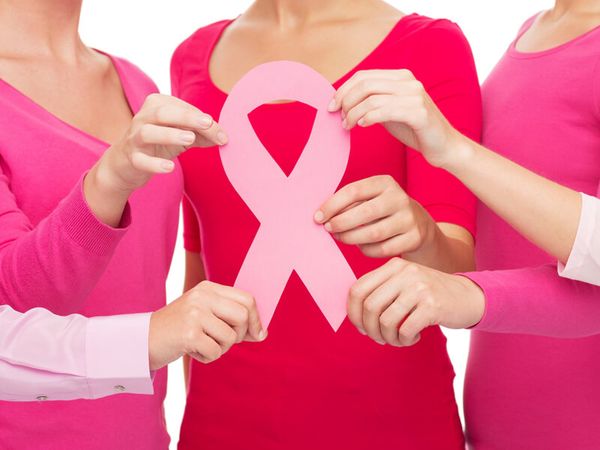BREAST CANCER
- BREAST CANCER

Breast cancer is a malignant tumor that emerges in the breast cells. Malignancy of tumors means that bunch of cancerous cells can not only grow in the specific cells, but also invade the surrounding tissues and metastasize to other organs. However, in most cases, the lumps in breasts are benign and are not cancerous which means that they do not spread to another body parts. Although breast cancer is known as a female disease, there are known several cases when men have contracted it as well.
The symptoms of this disease include the emergence of lumps in mammary glands which cause swelling and pain in the breasts. Often, these discomfort increases when the menstrual cycle is beginning. Besides, in some cases, there are cloudy discharges from the nipples which also may indicate the presence of cancer cells.
Risk Factors
Risk factors for this disease are divided into two groups: modifiable and non-modifiable.
The first group includes regular use of oral contraceptives, refuse of breast feeding, drinking alcohol, smoking, having obesity, and avoiding physical activity.
The second group includes such factors as sex, aging, family history, genetics, long duration of the menstrual cycle, and high density of the breast tissue. Inheritance of defected genes from parents or grandparents puts a woman at bigger risk for this disease.
Women are much more predisposed to breast cancer, while for men risk is nearly a hundred times less. Also, the risk greatly increases for women above the age of 45 years as many of them do not have the protection which estrogen confers against breast cancer. If a woman has a long duration of the menstrual cycle, it also makes her predisposed to this disease. As well, a dense breast tissue with a little fatty tissue increases the risk of emerging cancer cells in breasts.
One of the modifiable risk factors is childbearing. Two or three pregnancies and parturitions before the age of 30 significantly reduce the probability of emergence of breast cancer.
How to Decrease Modifiable Breast Cancer Risk Factors
The most effective way to reduce the risk for this disease is addressing the modifiable risk factors and changing those for better. First and main thing, the women should eat healthy food and make sure her ration is well-balanced and includes many vegetables, fruit, and whole grains. It is recommended to consume 2-3 servings of fresh vegetables and fruit every day. Besides, it is better to exclude red meat from the diet and replace it with sea fish.
To reduce the risk a woman should stop smoking and drinking alcohol. Physical activity is also required. A healthy lifestyle means also avoiding any stress and having enough quality night sleep.
Our Advantages
Quality Work
Unlimited Revisions
Affordable Pricing
24/7 Support
Fast Delivery